Where Does Household Dust Come From?

40% of dust particles come
from indoors.
This includes dead skin flakes,
carpet fibers, and other materials.
60% of dust particles come
from outdoors.
This includes dirt tracked into the
house or airborne particles.

Dust travels around the
world on jet streams.
They are sometimes called
rivers of wind.
North Africa is the biggest
source of atmospheric dust
in the world.
A few times every year, giant dust plumes drift from the
Sahara Desert in North Africa to the United States.
Here are other well-known dust-producing regions:

Great Salt Lake, Utah
The shore of the Caspian Sea
Parts of Arabia and Iran
Taklamakan Desert, China
Lake Eyre Basin, Australia

An estimated 200 to 5,000 teragrams of dust enters the atmosphere from space each year. (A teragram is equal to one trillion grams.)

Dust particles with diameters between 0.2 and 2 micrometers can stay aloft for 20 or more days.

Larger dust particles with diameters between 10 and 20 micrometers usually fall out of the sky within 24 hours.
What’s a Dust Allergy?
Allergies happen when your immune system overreacts to a typically harmless foreign substance. Triggers can include anything from pollen to specific foods to insect venom.3 Dust also causes allergies for many people.
Cockroaches
Pets
Pollen
Mold
Dust mites
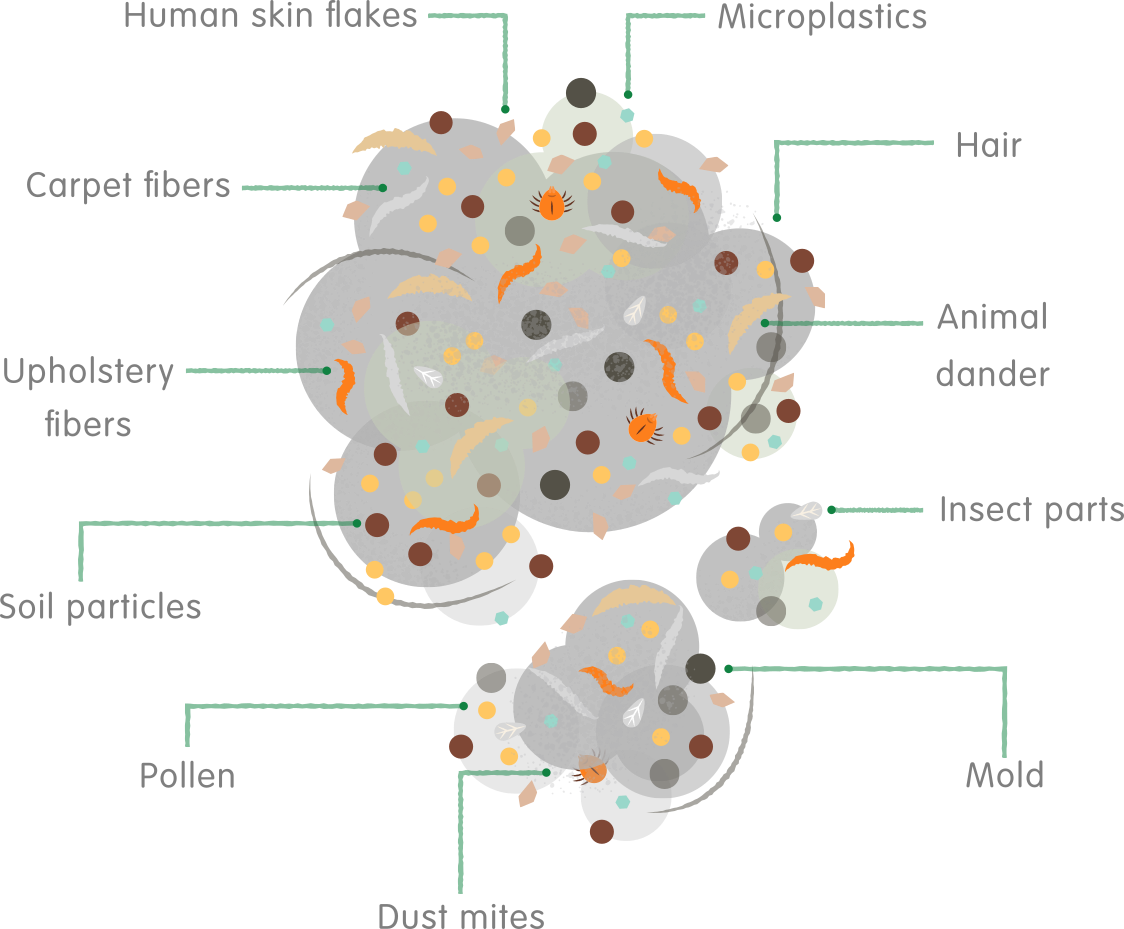
Cockroaches
These pests are common. In the most recent American Housing Survey, Census Bureau workers documented evidence of cockroach activity in 12.5 percent of houses.5 The saliva, feces, and body parts of these bugs mix with the air and can cause allergy symptoms.6
Pets
These pests are common. In the most recent American Housing Survey, Census Bureau workers documented evidence of cockroach activity in 12.5 percent of houses.5 The saliva, feces, and body parts of these bugs mix with the air and can cause allergy symptoms.6
Pets
Both cats and dogs can be dust allergy triggers due to allergens found in the dander (dead skin cells) they shed. Dander particles are tiny and can remain in the air for a long time and collect on upholstered furniture and clothing. Pet saliva can also be a problem because it sticks to rugs, bedding, and furniture, and it can circulate in the air after it dries. Urine and sweat can be triggers too.
As with cats and dogs, rodents and rabbits can harbor allergens in their dander, hair, saliva, and urine. Dust from the sawdust or litter in their cages can contribute to allergies as well.
Even pet birds can be possible triggers. Dander and dust mites can collect in birds’ feathers and spread when they move their wings. Their feces can also contain allergens.7
Mold
Mold can grow nearly anywhere under the right conditions, and it can grow in household dust particles.9 Exposure to it can lead to indoor allergies. There are hundreds of different kinds of mold, and you’re not necessarily allergic to all of them. Only some molds cause allergies, and different people can be allergic to different types.10
Dust mites
These microscopic bugs are perhaps the most common cause of dust allergies. More precisely, the protein in their feces causes allergies. Dust mites dine on human skin flakes and live on bedding, mattresses, carpet, upholstered furniture, and curtains. These tiny pests can cause an oversized amount of misery. Each dust mite can create up to 200 times its weight in waste, which can cause allergy symptoms in susceptible individuals. To learn more about dust mites, visit our page What is a Dust Mite Allergy?
Do you have a dust allergy?
Sufferers often experience these symptoms.
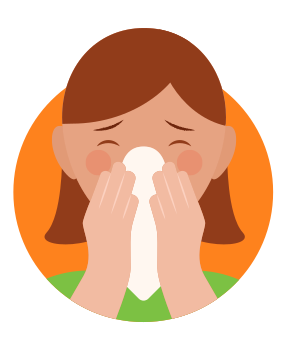
Sneezing
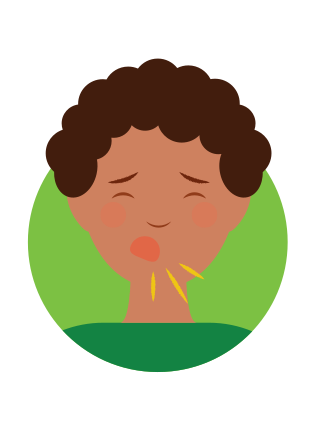
Coughing

Itchy nose,
mouth, or throat
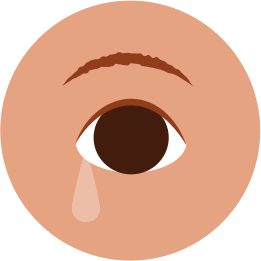
Red, itchy, and
watery eyes

Runny nose

Stuffy nose
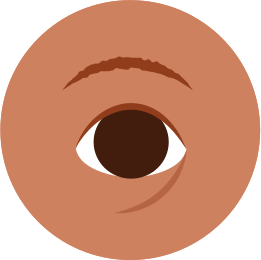
Swollen skin
under the eyes
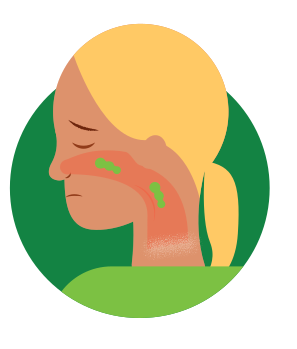
Postnasal drip
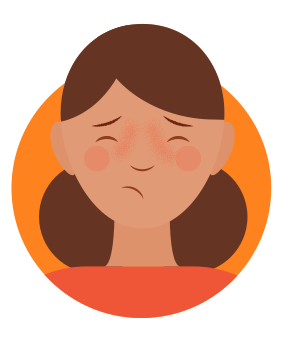
Facial pressure
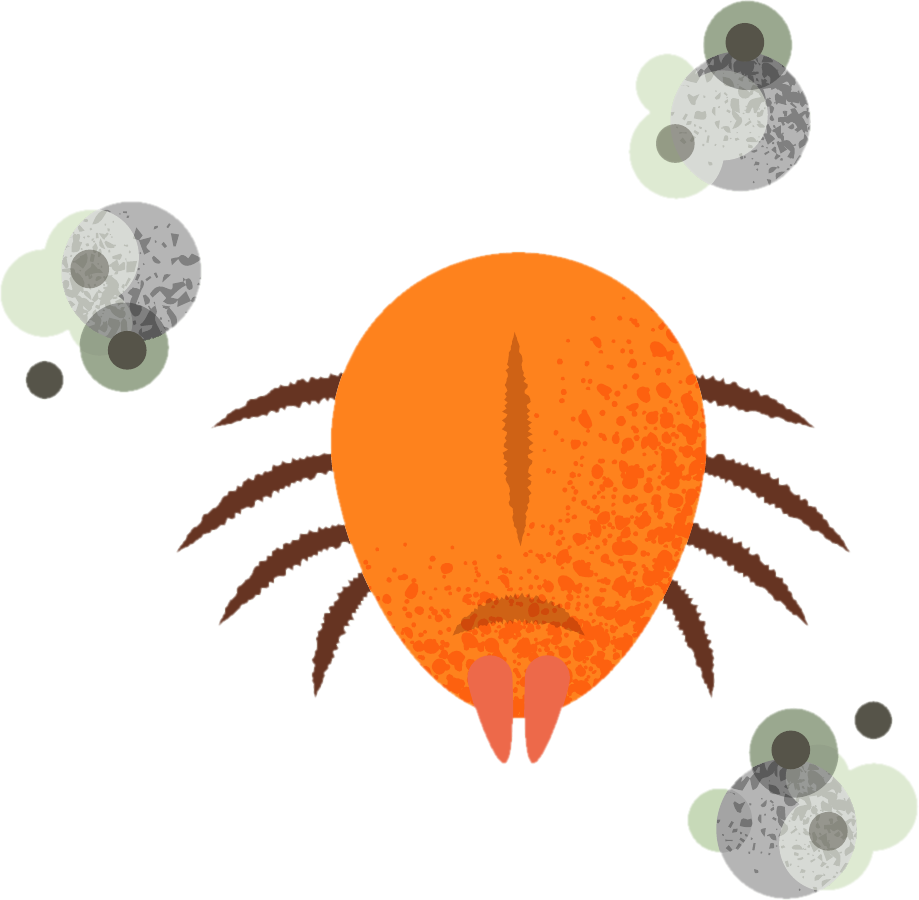
If dust mites are causing your dust
allergy, you may notice symptoms more
often at night and in the morning
after spending time near your pillows,
bedding, and mattress.

Allergy signs may happen all year
since you’re constantly exposed, or
you may notice more symptoms in
the winter when you spend more
time indoors.
Do You Have a Dust Allergy?
A dust allergy can cause a variety of symptoms similar in nature to other types of allergies.
The best way to determine if your dust allergy is caused by dust mites or another allergen is to seek a professional diagnosis. In addition to asking questions about your symptoms and home, the doctor may examine your nose’s lining with a lighted instrument. If your nasal passages are pale, bluish, or swollen, it’s a good indication you suffer from an airborne allergy. Your doctor may refer you to an allergist for further testing to narrow down the cause. Allergists commonly conduct these two tests.
Skin test
During a skin test, an allergist pricks your forearm or back with tiny amounts of purified extracts of an allergen and then observes your skin for 15 minutes to see if an itchy red bump appears. If your skin erupts, it means you’ve reacted to the allergen.
Blood test
In some cases, if you’re taking certain medications that can affect the results of a skin test, your allergist may recommend undergoing a blood test that checks for antibodies to allergens such as dust mites.
Dust Allergy Treatment Options
Possible treatments for dust allergies include:
Antihistamines
Decongestants
Corticosteroids
Leukotriene modifiers
Nasal irrigation
Immunotherapy
Antihistamines
Antihistamines reduce your body’s production of histamine, a chemical that causes sneezing, itching, a runny nose, and other allergy symptoms. Compare different antihistamines with our Allergy Medicine Comparison Chart.
Decongestants
Decongestants make breathing easier by shrinking swollen tissues in the nasal passages. Learn more about how decongestants can provide relief from dust allergy symptoms here.
Corticosteroids
Corticosteroids in the form of a nasal spray can lessen inflammation and reduce allergy symptoms.
Leukotriene modifiers
Leukotriene modifiers are prescription medications that provide relief by stopping the action of specific chemicals in the immune system.
If you’re seeking relief from dust allergies without medication, you have additional options.
Nasal irrigation
Rinse dust particles from your nasal passages and sinuses regularly with a sterile saline solution. Using a neti pot or other nasal irrigation system can help remove airborne allergens and extra mucus.
Immunotherapy
You may wonder if allergy shots work for dust mites or can help you get rid of a dust allergy. The answer is yes — through immunotherapy. During this lengthy treatment, an allergist administers a series of shots to gradually retrain your immune system to be less sensitive to an allergen.11
What Else Can I Do to Help Prevent Dust Allergies?
While seeking treatment from an allergist and using medication can help control your allergy symptoms, you can also make changes at home to lessen your exposure in the first place. Here’s how to prevent dust in your house:
To protect yourself from dust allergies, clean your home regularly. Dust furniture with a damp cloth or cleaning spray at least once a week. Wait for dust to settle before you vacuum. Try using a HEPA filter or a double bag on your vacuum to help trap allergens. Also, wash throw rugs regularly and curtains twice a year.
Cleaning is especially important in the bedroom, a haven for dust. Pillows and mattresses hide microscopic dust mites. Wash bed linens in hot water, and vacuum the mattress and box spring and under the bed. For added protection, remove decorative pillows and stuffed animals, use dust-mite-proof covers on pillows and mattresses, and consider swapping carpeting for bare floors.
The fight against dust doesn’t stop there. In every room, you can minimize knickknacks and clutter that can collect dust. Remember, the best defense against a dust allergy is cleanliness.
Visit our page 5 Indoor Air Quality Tips for more strategies to reduce indoor allergens.
Conclusion
While you can reduce your exposure to dust and other indoor allergens, it’s impossible to avoid them altogether. Fortunately, you can take simple actions and rely on medications to help find relief from your dust allergy symptoms.

Kristen Stewart is a freelance writer specializing in health and lifestyle topics. She lives in New Jersey with her husband, three kids and two very needy cats.
References
https://www.mayoclinic.org/diseases-conditions/pet-allergy/symptoms-causes/syc-20352192
https://www.cdc.gov/mold/faqs.htm,
https://www.mayoclinic.org/diseases-conditions/mold-allergy/symptoms-causes/syc-20351519
https://www.mayoclinic.org/diseases-conditions/dust-mites/diagnosis-treatment/drc-20352178
Links to other parties’ articles and websites are provided for convenience only. Kenvue is not responsible for their content.

